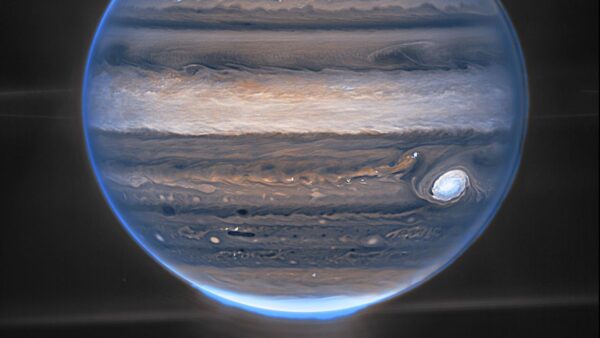We’re exploring celestial light displays on other planets—like alien auroras— and they’re revealing fascinating insights about Earth’s Northern Lights!
Discovering the same enchanting light shows seen in the Arctic and Antarctic skies on planets in our Solar System and beyond is helping astronomers learn more about these distant worlds.
Oh, brace yourselves, Earthlings! The universe has decided to put on a grand spectacle, and this time it’s not just reserved for the Arctic Circle. Move over, Northern Lights; Uranus wants its moment in the limelight, literally. The scientists at the University of Leicester must be thrilled to have cracked the code of Uranus’s infrared aurora. Six whole hours of intense brightness analysis – a riveting Netflix series couldn’t compete with that excitement.

Forget about the classic, visually appealing auroras we enjoy on Earth. Uranus, always the rebel, prefers a show in the electromagnetic spectrum invisible to the human eye. How quaint! Voyager 2, the cosmic paparazzi, caught glimpses of ultraviolet and radio auroras back in ’86, but it seems the infrared aurora had been playing hide-and-seek until now. Sneaky, Uranus!
But wait, there’s more! Uranus isn’t just about putting on a light show; it’s also a rebel with a cause. Its upper atmosphere is hotter than expected. Move over, Sun – Uranus is heating things up with its aurora. Who knew a planet with an odd orbit on its side relative to its motion around the Sun could be so sassy?
And let’s not forget the role of Uranus as the universe’s personal fortune teller for geomagnetic reversals. Earth’s magnetic field can’t decide if it wants to be north or south, but fear not! Uranus, with its peculiar rotational process, might have the answers. Take notes, astronomers; Uranus is spilling the cosmic tea.
But Uranus isn’t the only star of this celestial soap opera. Jupiter, Saturn, Neptune, and even the magnetic-field-deprived Mars and Venus have their own versions of auroras. It’s like a cosmic fashion show, but instead of models, we have planets donning vibrant magnetic fields and charged particles.
Oh, and don’t get me started on exoplanets – those distant, mysterious celebs we can’t even visit. Radio emissions, failed stars, and potential habitability lessons – it’s a cosmic gossip column waiting to happen. So, as we gaze at the auroras of Uranus, let’s raise our intergalactic popcorn and appreciate the universe’s dramatic light displays. Bravo, Uranus, bravo!